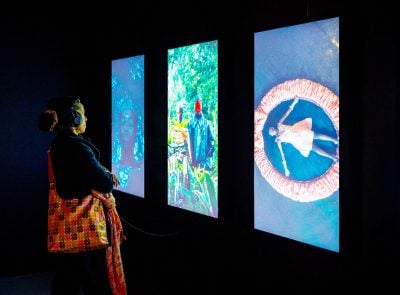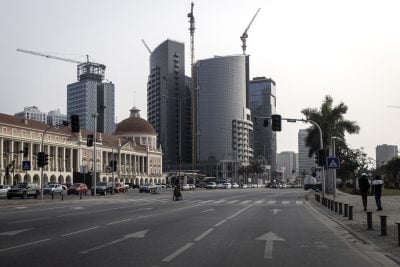Without banging any drums, Turkey has been steadily expanding its presence in Africa and now has 36 embassies across the continent, including one in Mogadishu, the capital of Somalia. This is an exceptional show of confidence in a country that the rest of the world seems to have given up on. Martin Rivers reports from the Somali capital.
Anyone who doubts Turkey’s long-term commitment to Africa need only look at the growing number of star-and-crescent flags fluttering outside diplomatic missions across the continent. The distinctive red motif now adorns 36 embassies in Africa, three times as many as in 2009.
Each new mission speaks to the growing inertia of commercial and political ties between Ankara and its partners on the continent. *Bilateral trade with sub-Saharan Africa is up three-fold since 2003 to reach $18.8bn in 2017, with exports totalling $11.6bn and imports $7.1bn.
Among Turkish contractors, Africa now accounts for 19% of international business volumes. Turkey’s heavy-duty exports – notably iron, steel, machinery and vehicles – are helping the continent down the laborious path of industrialisation.
One embassy, though, stands out less for its economic providence than the simple audacity of being opened in the first place. In October 2011, Turkey joined a handful of plucky African states in sending an ambassador to Somalia, the war-torn nation in the Horn of Africa that had lacked a functioning government since 1991.
The move came two months after Recep Tayyip Erdoğan, Turkey’s then Prime Minister, became the first non-African leader to visit Mogadishu in nearly two decades. Building on the momentum of the 2010 Istanbul Conference on Somalia, jointly convened with the UN, Erdoğan’s message was clear: Ankara will take a leading role in bringing peace and stability to Somalia. An initial focus on food aid during the 2011 East Africa drought – the worst to hit the region in 60 years – quickly evolved into long-term development projects.
Today, foreign visitors land in Mogadishu’s Aden Adde International Airport on the wings of a Turkish Airlines plane and into the arms of Favori, a Turkish airport operator; cars on the city’s heavily congested roads drive unknowingly over Turkish-laid asphalt; and Somali youth flock to agriculture and fishery schools built in the capital with free cash from Ankara.
“People always tend to question the real motivation behind Turkish actions in Mogadishu,” Olgan Bekar, Turkey’s ambassador to Somalia, tells African Business during an interview in his heavily guarded city-centre embassy.
“Really the answer is very simple: humanitarian motivation. In Somalia, we are setting an example of the humanitarian assistance model; one that is different from the already established assistance programmes of the international community.
“Of course, after eliminating humanitarian suffering in Mogadishu, we then need to implement some development projects. Sending humanitarian assistance solves the problem for only a short time. Providing development projects, providing training for institutional capacity building – that is the most important thing.”
Bekar accepts that as Turkey’s focus shifts from humanitarian to developmental aid, there will be opportunities to benefit economically. Like any other country, he says, Turkey wants “good trade relations based on mutual advantage” with foreign partners. But the day when Somalia brings net benefits to Ankara’s fiscal balance sheet is a long way off. Mogadishu, though stabilising, remains locked in a cycle of violence and human misery. Fostering ‘normal state structures’ will continue to be Turkey’s overriding, and costly, priority for many years to come.
Signs of progress
Politically, there is no doubt that progress has been made. Somali parliamentarians elected their first President, Hassan Sheikh Mohamud, in September 2012. That vote came one month after the Federal Parliament of Somalia took the baton from the Transitional Federal Parliament, the interim authority that helped push the hard-line Islamic Courts Union from power in 2006.
Though a welcome development, the demise of the Islamic Courts in no way spelled the end of Somalia’s troubles. While 200 former members eventually joined the transitional government, thousands of disaffected radicals coalesced under new militant offshoots. The largest, Al Shabaab, quickly gained notoriety as one of the most brutal jihadist groups on the planet. At the height of its power in 2010, Al Shabaab controlled vast swathes of territory across Somalia, imposing a strict form of Sharia law on its subjects while dabbling in bombings, kidnappings, piracy and even ivory hunting.
Despite being on the back foot, it remains a formidable force of around 7,000 fighters that carries out regular attacks at home, and occasional spectaculars abroad. In 2010, its suicide bombers killed 74 sports fans in Kampala, Uganda; in 2013, the infamous Westgate shopping mall attack left 67 dead in Nairobi, Kenya.
Al Shabaab initially avoided targeting Turkish interests, but after pledging allegiance to Al Qaeda three years ago, it put Ankara firmly in its crosshairs. The suicide bombing of a building used by Turkish embassy staff in July 2013 claimed two lives. Just one month previously, 22 people had been killed when the main UN compound in Mogadishu came under attack. Smaller-scale incidents are commonplace. According to the jihadists’ twisted ideology, any foreign entity that supports the federal government is a legitimate military target.
“We are always at the highest level of alert,” Bekar admits. “We know that we need to pursue a comprehensive strategy towards them (Al Shabaab). One pillar is the military struggle; one is intelligence; one is social and economic; one is re-engagement. But it takes time. We are expecting more such attacks in Mogadishu.”
While Somalia is far from peaceful today, the political progress has already been accompanied by tangible security gains nationwide. Following two decades of mutual destruction by warlords, Islamists and various foreign military actors, Somalis have grown tired of conflict. The African Union Mission in Somalia (AMISOM), an international peace-enforcement body that fights alongside the Somali Armed Forces, deserves much of the credit for opening up this alternative path.
AMISOM was established by the African Union’s Peace and Security Council in 2007, shortly after the defeat of the Islamic Courts by Ethiopian troops and forces loyal to the transitional authorities. The mission presently comprises 22,000 troops from six African nations: Uganda, Burundi, Djibouti, Sierra Leone, Kenya and Ethiopia.
“We were the first guys who came here in 2007. We lost a lot of soldiers,” recalls Brigadier General Dick Olum, the commander of AMISOM’s 6,000-strong Ugandan division. With responsibility for Sector One – the first of six administrative areas spanning central and southern Somalia – his troops are deployed in the regions of Banadir (including Mogadishu) and Lower Shabelle.
“Four years ago, we could not even move 10km out of Mogadishu,” Olum admits, standing by a wall-length map of Sector One at his airport headquarters.
“Then we started pushing them out until we reached Mahaday. We pushed them up to Afgooye, and eventually up to Baidoa. We started southwards, pushing them out of all these areas bit by bit. By last year, we were already in Merca. Come this February, we had already pushed them past Shalambood, Qoryoley. Fourteen days ago, we pushed them out of here,” he says, pointing to the strategic port town of Barawe, 250km south of Mogadishu.
The largest remaining stronghold of Al Shabaab, Barawe was liberated by Ugandan troops in October. It is one of eight towns recaptured since the launch of Operation Indian Ocean, a joint military initiative aimed at sweeping up vestigial insurgent-held areas. The jihadists are now limited to rural districts and a handful of smaller towns like Dinsoor and Jilib.
Al Shabaab squeezed
Barawe is significant for two other reasons. Al Shabaab’s emir, Ahmed Abdi Godane, was killed by a US drone strike near the coastal town in September. His death prompted the government to announce a 45-day amnesty – later extended by 60 days – for surrendering Al Shabaab fighters. “Barawe was also an economic port for them. They were exporting a lot of charcoal to the UAE Olum notes. “You can’t imagine the amount of charcoal that is transported from Barawe; but once we took over the town, we put a stop to that.”
With local troops in the semi-autonomous region of Puntland also recording successes against Al Shabaab last year, the terror group is being squeezed in all corners of the country. Though far from a spent force, its financial, spiritual and human resources are dwindling.
There is no denying that huge challenges persist. Imbuing confidence in novel governmental structures will not be easy for Somali society, which revolves around long-standing clan-based systems. Right at the heart of government, tribal bickering has unleashed a cycle of in-fighting between the President and successive Prime Ministers. On the military front, insurgent weapons are still flooding across the Gulf of Aden from Yemen. AMISOM, like the invading Ethiopian army before it, has faced accusations of human rights abuses.
Nonetheless, three key benchmarks are sharpening the minds of policy makers: the implementation of true federalism across all regions; the establishment of a new constitution; and the holding of national elections in 2016. Whether these lofty targets are within reach remains to be seen, but the military and political bulwarks that will support them seem sturdy.
In central Mogadishu, Digfer Hospital, a 200-bed, $58m facility, recently opened its doors under a five-year management and training contract with Turkey. Al Shabaab showed what it thought of the gift by repeatedly shelling it with mortars in 2013. Somalis must now decide if insurgents or doctors offer the best hope for their country. Presuming they side with the latter, Ankara is betting that its generosity will not be forgotten in happier times ahead.
*Article was updated on Monday 13 August.
Want to continue reading? Subscribe today.
You've read all your free articles for this month! Subscribe now to enjoy full access to our content.
Digital Monthly
£8.00 / month
Receive full unlimited access to our articles, opinions, podcasts and more.
Digital Yearly
£70.00 / year
Our best value offer - save £26 and gain access to all of our digital content for an entire year!
 Sign in with Google
Sign in with Google 


